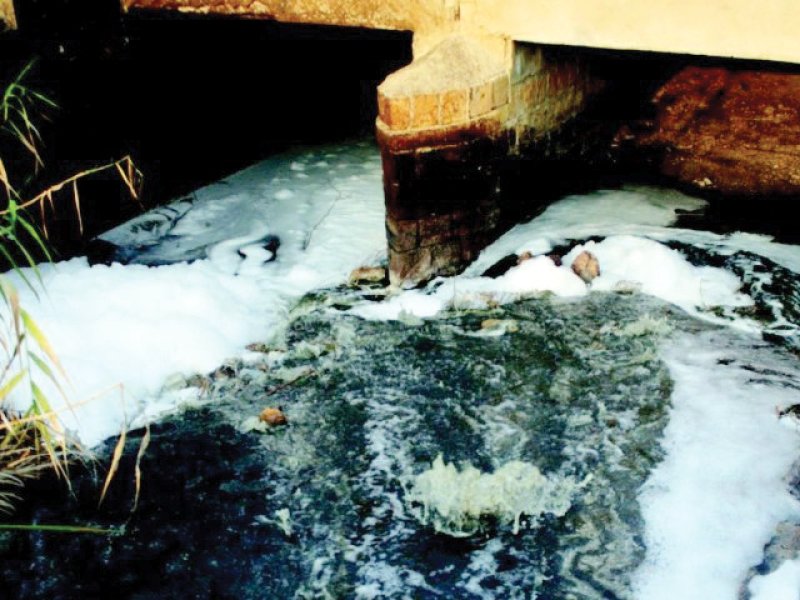
In a report submitted to the Sindh High Court (SHC) in Karachi earlier this week, the Sindh Environmental Protection Agency (Sepa) stated that industrial, municipal, domestic and agricultural waste were polluting the waterway.
The Kalri Baglihar Feeder, which has a capacity of around 9,000 cusecs but usually flows at between 4,000 to 6,000 cusecs, springs from the Kotri Barrage. Passing through Jamshoro and Kotri, it enters Thatta district, supplying water to the provincial capital through the Dhabeji pumping station.
En route, it is treated at a disposal site for industrial units in Kotri, urban and rural residential areas, municipalities and agricultural fields. According to the report, 18 industries in Kotri Site dump effluents in the canal. Out of 68 working units, 32 release poisonous liquids and only 14 of these have installed in-house waste treatment plants.
“We have served multiple notices to these factories but unless the rules of the Sindh Environment Protection Act of 2014 are finalised, proper action cannot be taken,” Sepa Hyderabad in-charge Muneer Ahmed Abbasi told The Express Tribune. At the moment, the rules of the former federal law — the Pakistan Environment Protection Act — are in application. Under the old law, a proven violation can be penalised with a fine of up to Rs1 million and an additional Rs100,000 per day in case of continuous violation. The new act has increased the penalty to Rs5 million.
The communities in Jamshoro and Thatta districts who drink water directly from the canal are most exposed to its toxic contents. After hearing a public interest petition filed by lawyer Raja Jawad, the SHC Hyderabad bench in April 2010 told the provincial government and Site authorities to construct a waste treatment plant for Kotri Site.
Subsequently, the government approved the project, which was to be completed by December 2012 with a capacity of 2.5 million gallons per day. Although the plant has been built at a revised cost of approximately Rs1 billion, it has yet to start operations.
Meanwhile, untreated municipal sewage from Kotri taluka and agricultural waste from Mirpur Sakro, Ghora Bari, Keti Bunder and Kharo Chahn talukas also make their way into the canal. According to the Sepa report, the municipal and public health engineering authorities have been issued notices time and again to address the issue but to no avail.
“The people of Karachi, Thatta and Jamshoro are being given a slow poison through this canal,” said Pakistan Muslim League-Quaid’s Haleem Adil Shaikh, who is also the petitioner in the SHC case. “Despite admitting to the presence of poisonous effluents in the waterway, the provincial government is not taking practical steps to address it.
Published in The Express Tribune, February 21st, 2015.


1731570357-0/elon-musk-(1)1731570357-0-165x106.webp)
-(1)1717678110-0/Kendrick-(1)-(1)1717678110-0-165x106.webp)













COMMENTS
Comments are moderated and generally will be posted if they are on-topic and not abusive.
For more information, please see our Comments FAQ